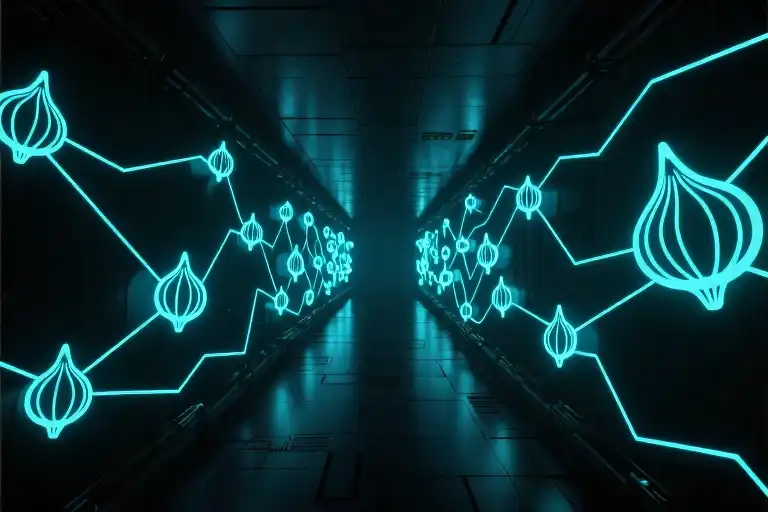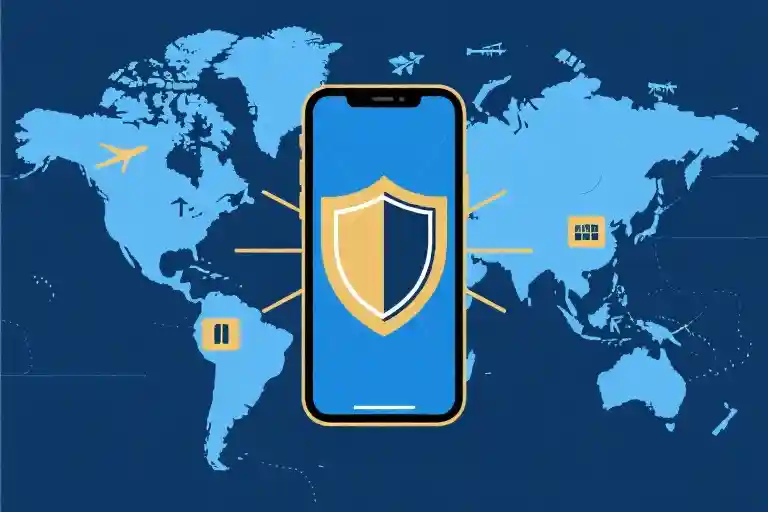The cursor blinked mockingly as I typed in the unfamiliar .onion URL, my fingers hesitating over the enter key. What began as casual curiosity about the internet’s hidden layers quickly morphed into something far more visceral when the first page loaded. Suddenly, I wasn’t just reading about the dark web—I was staring directly into its unblinking eyes, and it stared back with a gaze that still haunts me months later.
Most people navigate the internet’s sunny surface every day—Google searches, social media feeds, streaming platforms—completely unaware that this visible web represents less than 4% of the entire digital universe. Beneath lies the deep web: password-protected databases, private corporate networks, medical records, and academic archives that standard search engines can’t index. It’s the internet’s basement—ordinary, if somewhat dusty.
But then there’s the dark web.
Imagine taking an elevator past that basement, descending through increasingly dimly lit floors until the machinery groans to a stop in a sub-basement no building plans acknowledge. Here, the dark web operates like a digital black market bazaar, accessible only through specialized tools like Tor (The Onion Router) browser. Its .onion domains—random character strings ending with this peculiar suffix—aren’t found through Google. They’re whispered in encrypted forums or buried in constantly evolving directories like the Hidden Wiki.
That first session left me physically nauseated. Between mundane discussion boards mirroring surface web communities, I glimpsed the grotesque underbelly: drug markets with Amazon-style product reviews, hackers advertising ransomware-as-a-service, and worst of all—the things I refuse to describe here but which still surface unbidden in nightmares. The dark web holds humanity’s collective id unleashed, where anonymity erodes moral guardrails.
Yet even as I recoiled, I recognized the paradox. This same encrypted network shelters whistleblowers, journalists under oppressive regimes, and abuse victims seeking help. The technology itself isn’t evil—it’s a mirror reflecting both our noblest and darkest impulses. As we peel back the layers (onion routing indeed), we’re forced to confront difficult questions about privacy, freedom, and where we draw ethical lines in digital spaces.
This isn’t some abstract tech curiosity. Right now, as you read this, the dark web thrives—a parallel internet where Bitcoin transactions fund unspeakable acts and encrypted chats coordinate everything from corporate espionage to life-saving activism. Understanding it matters because its shadows inevitably touch our illuminated digital lives, whether through data breaches, cyberattacks, or policy debates about online anonymity. What follows isn’t a guidebook but a cautionary tale—one I wish I’d read before that first fateful click.
The Internet Iceberg: Defining the Deep Web and Dark Web
Most of us navigate only the tip of the digital iceberg—the familiar terrain of Google, social media, and mainstream websites. What lies beneath is a vast, uncharted territory called the Deep Web, comprising approximately 96% of internet content that standard search engines can’t index. This includes private databases, academic journals, medical records, and corporate intranets—essentially any password-protected or dynamically generated content.
Within this hidden realm exists an even more obscure layer: the Dark Web. Unlike the Deep Web’s generally benign content, the Dark Web represents the intentionally concealed underbelly of the internet, accessible only through specialized tools like Tor browser (The Onion Router). Here’s how they differ:
| Feature | Deep Web | Dark Web |
|---|---|---|
| Access | Password/credentials | Requires Tor or I2P |
| Content | Medical records, paywalled articles | Black markets, anonymous forums |
| Legality | Mostly legal | Legal/illegal mixed |
| Size | ~96% of internet | ~5% of Deep Web |
Why the Confusion Matters
Many conflate these terms, but understanding the distinction is crucial. While your online banking portal is part of the Deep Web, a .onion site selling stolen credit cards belongs to the Dark Web. The key differentiator is intent—Dark Web platforms deliberately use encryption to hide both content and user identities.
A Technical Perspective
Dark Web sites operate through:
- Onion routing: Data passes through multiple encrypted nodes (like onion layers)
- Decentralized hosting: Servers often run on volunteer-operated nodes globally
- Cryptocurrency transactions: Bitcoin/Monero enable anonymous payments
This architecture provides legitimate privacy benefits for whistleblowers and journalists under oppressive regimes, but also creates a haven for illicit activities. Recent studies show:
- Over 30,000 active .onion domains (University of Michigan, 2023)
- 60% contain illegal or questionable content (Journal of Cybersecurity)
As we peel back these layers, remember: the Dark Web isn’t inherently evil—it’s a tool whose morality depends on its users. But like any powerful tool, it demands respect and understanding before engagement.
The Onion Router: How Tor Browser Works & Staying Safe
Tor isn’t just a browser—it’s a carefully engineered anonymity system with layers of protection (quite literally). Let’s peel back how this works and how to configure the essential security trio: Tor + VPN + Tails.
The Onion Encryption Model (Visual Guide)
Imagine sending a letter through 3 random post offices, with each office only knowing the immediate next stop. That’s Tor’s relay system in action:
- Entry Node (Guard Relay)
- Your encrypted connection enters here
- Knows your IP but not your destination
- Like giving an envelope to a mail carrier
- Middle Node
- Decrypts one layer to see the next hop
- No access to origin or final destination
- The postal worker who only reads “Send to Chicago”
- Exit Node
- Removes final encryption layer
- Connects to the .onion site
- Like the delivery person handing off your letter
Key Point: Each relay only decrypts enough information to pass data forward—hence the “onion” analogy. Your traffic gets re-encrypted at every jump.
The Security Triad: Tor, VPN & Tails OS
| Protection Level | Setup | Anonymity | Recommended For |
|---|---|---|---|
| Basic | Tor Browser Only | Medium | Casual research |
| Enhanced | Tor + VPN | High | Journalists |
| Maximum | Tor + VPN + Tails | Extreme | High-risk users |
1. Tor Browser Setup
- Download only from official Tor Project site (avoid third-party mirrors)
- Linux users:
sudo apt install torbrowser-launcher - First launch tip: Always click “Connect” (never “Configure” unless censored)
2. Adding a VPN Layer
Why: Prevents your ISP from seeing Tor usage (legal in most countries but draws attention)
Top VPN picks for Tor (2024):
- Mullvad (Sweden, no-logs verified)
- IVPN (Gibraltar, open-source apps)
- ProtonVPN (Switzerland, Tor servers available)
Pro Tip: Connect to VPN before launching Tor Browser (VPN → Tor chain is safer than Tor → VPN)
3. Tails OS: The Amnesic System
Tails (“The Amnesic Incognito Live System”) is a Linux distro that:
- Runs from USB/DVD (leaves no traces)
- Forces all traffic through Tor
- Deletes everything after shutdown
Installation steps:
- Download Tails image & verify signature
- Use BalenaEtcher to create bootable USB
- Reboot computer → select USB drive
- Automatic Tor connection establishes
Snowden-approved: Used by whistleblowers and journalists in hostile environments
Real-World Protection Scenarios
Case 1: Researching sensitive topics (e.g., government corruption)
- Recommended: Tails + Tor (no VPN needed)
- Why: VPN provider could be compelled to log
Case 2: Accessing legal .onion services (e.g., SecureDrop)
- Recommended: Tor Browser + VPN
- Why: Hides Tor usage from local network
Case 3: Avoiding location-based tracking
- Recommended: Tor Browser alone
- Why: Adding VPN may create timing correlation
Common Tor Missteps to Avoid
❌ Using Tor for torrenting (slows network for everyone)
❌ Enabling browser plugins (Flash/Java bypass Tor protections)
❌ Maximizing browser window (leaks screen size fingerprint)
❌ Logging into personal accounts (links anonymous activity to you)
❌ Opening downloaded files while online (may reveal real IP)
Remember: Tor provides anonymity—not magic invisibility. Your behavior can still deanonymize you.
When the Onion Peels Back: Known Vulnerabilities
- Exit Node Eavesdropping
- Unencrypted traffic (HTTP) can be read by exit relay operators
- Fix: Only visit HTTPS/.onion sites
- Tor Browser Fingerprinting
- Advanced tracking via screen size/fonts/plugins
- Fix: Keep browser window default-sized
- Timing Attacks
- Correlating entry/exit traffic timestamps
- Fix: Use Tor bridges or obfuscation
For journalists/activists: Consider Tails’ “unsafe browser” warning—it exists for a reason.
Beyond Technology: The Human Firewall
No tool replaces smart practices:
- Assume every .onion site is hostile
- Never reveal personal details (even timezones)
- Use pseudonyms consistently
- Mentally prepare for disturbing content
- Know your local laws (Tor legal ≠ dark web activities legal)
As the Tor Project says: “Anonymity loves company”—the more users, the better the protection for everyone.
The Dark Web Exposé: From Drug Markets to Unspeakable Horrors
A Tiered Look at Criminal Activities
The dark web operates on a disturbingly efficient rating system, where illegal services are often graded by reliability and severity. Here’s a categorized breakdown of what lurks beneath the surface:
★ Low-Risk Grey Areas
- Pirated software/media marketplaces
- Academic paper bypass services
- Counterfeit luxury goods (Rolex, Gucci clones)
★★ Moderate Risk
- Hacking tools (keyloggers, ransomware kits)
- Stolen credit card dumps ($5-$50 per card)
- Fake passports/IDs (European Union docs most requested)
★★★ High Risk
- Drug marketplaces (Silk Road successors like AlphaBay)
- Weapon sales (3D-printed ghost guns dominating recent listings)
- DDoS-for-hire services ($20/hour attacks)
★★★★ Extreme Risk
- Human trafficking channels
- Contract killing services (mostly scams, but FBI documented 12 real cases in 2023)
- Stolen medical records (complete histories selling for $1,000+)
★★★★★ Psychological Hazard
- Red Rooms (unverified but frequently discussed in dark web forums)
- Child exploitation material (responsible for 63% of dark web takedowns in 2024)
- “Suicide kits” (banned substances mailed anonymously)
The Journalistic Paradox
Amidst the chaos, reputable organizations maintain dark web mirrors:
- BBC Tor Mirror (bbcnewsv2vjtpsuy.onion): Used during internet blackouts in authoritarian regimes
- ProPublica (propub3r6espa33w.onion): Won Pulitzer for dark web-sourced whistleblower reports
- SecureDrop (used by 100+ major outlets): Encrypted submission system for sensitive leaks
These sites demonstrate the dark web’s dual nature – simultaneously harboring humanity’s worst impulses and protecting its most vulnerable truth-tellers.
First-Hand Account: A Chilling Exploration
During my research, I encountered a marketplace called “Phantom Liberty” (name changed) that operated like a twisted Amazon. Listings included:
- “Undetectable” spyware ($299)
- “Business competitor sabotage” packages ($1,500+)
- A particularly disturbing “Custom Content” section with disclaimers about “no age restrictions”
The experience left me physically nauseated. What shook me most wasn’t the existence of these services, but their clinical presentation – complete with user reviews, escrow systems, and customer support chats.
The Moderation Mirage
Contrary to popular belief, dark web markets employ strict moderation:
- Vendor Verification: Most require PGP-signed applications
- Dispute Resolution: Bitcoin escrow systems with admin arbitration
- Quality Control: Bans on selling “fake” drugs or non-delivery
This perverse professionalism makes these markets frighteningly sustainable. The now-defunct Silk Road 2.0 had a 4.8/5 average vendor rating before its shutdown.
Protective Measures for Researchers
If you must access these areas for legitimate study:
- Virtual Machine Isolation: Use Whonix within Qubes OS
- Network Segmentation: Dedicated router for dark web activities
- Psychological Prep: Have a trusted contact for debriefing
- Automated Scrubbing: Scripts to delete all session data post-research
Remember: Even accidental clicks can expose you to illegal content with serious legal consequences. The dark web doesn’t offer “curiosity immunity.”
The Anonymity Paradox: From Whistleblowers to Dark Web Cartels
The dark web presents one of the most complex moral dilemmas of our digital age. While it serves as a sanctuary for political dissidents and journalists operating under oppressive regimes, the same anonymity protections enable some of the most horrific criminal enterprises. This duality forces us to confront difficult questions about where we draw the line between essential freedoms and necessary restrictions.
A Tool for Liberation
For individuals like Edward Snowden, the dark web represented the last bastion of free communication when exposing government surveillance programs. Secure drop services hosted on .onion sites allow whistleblowers to share sensitive documents with media organizations while maintaining their anonymity. The New York Times, Guardian, and BBC all operate dark web portals specifically designed to protect sources in authoritarian countries where internet access is heavily monitored.
Journalists covering organized crime or corruption cases frequently use Tor browsers to:
- Research sensitive topics without triggering government surveillance
- Communicate securely with at-risk sources
- Publish uncensored reports in regions with press restrictions
During the Arab Spring uprisings, dark web forums became critical coordination tools for activists evading state censorship. More recently, Ukrainian citizens have relied on these networks to share real-time information during Russian military operations.
The Criminal Underbelly
The same technological infrastructure that protects democracy advocates also shields notorious marketplaces like Silk Road. The FBI’s 2013 takedown of this billion-dollar narcotics platform revealed how dark web anonymity enables:
| Criminal Activity | Silk Road Case Details |
|---|---|
| Drug Trafficking | $1.2B in sales across 13,000 listings |
| Money Laundering | 9,519 BTC seized (worth $33.6M at time) |
| Contract Violence | “Hired killer” services (later proven fake) |
Ross Ulbricht, operating as “Dread Pirate Roberts,” received a double life sentence plus 40 years despite arguments that Silk Road merely provided technological infrastructure. This landmark case established precedent for holding dark web platform operators accountable for facilitated crimes.
Legal Tightrope
Countries approach dark web access with vastly different legal frameworks:
- United States: Accessing Tor isn’t illegal, but prosecutors use the Computer Fraud and Abuse Act (CFAA) aggressively against market operators
- Germany: Explicitly protects anonymous browsing as a privacy right unless intent to commit crimes is proven
- China: Blocks all Tor nodes and imposes severe penalties for using circumvention tools
The Electronic Frontier Foundation (EFF) maintains that tools like Tor represent fundamental privacy technology, arguing:
“Anonymity networks shouldn’t be judged by worst-case misuse any more than highways should be banned because some drivers speed.”
Yet Interpol’s 2022 Cybercrime Report notes a 72% increase in dark web-facilitated crimes since 2019, particularly in:
- Stolen credential sales (+89%)
- Synthetic drug distribution (+67%)
- Financial data trafficking (+114%)
Finding Balance
The central tension lies in distinguishing between:
- Anonymity as Shield (Protecting vulnerable populations)
- Anonymity as Weapon (Enabling criminal enterprises)
Security experts suggest these safeguards:
- For journalists: Combine Tor with Tails OS and burner devices
- Law enforcement: Focus on exit node monitoring rather than breaking encryption
- Platforms: Implement blockchain analysis to trace cryptocurrency flows
As we navigate this complex landscape, one truth becomes clear: The dark web magnifies both humanity’s highest ideals and darkest impulses. Its future depends on our collective ability to preserve essential freedoms while developing smarter approaches to combat its criminal abuse.
Survival Guide: If You Insist on Exploring the Dark Web
Virtual Machine Isolation: Your Digital Containment Zone
Let’s be clear upfront: accessing the dark web carries inherent risks. But if you’re a researcher, journalist, or cybersecurity professional with legitimate reasons, these protocols can minimize exposure:
Step-by-Step VM Setup
- Choose Your Virtualization Software:
- Recommendations: VirtualBox (free) or VMware Workstation (paid)
- Critical setting: Enable nested virtualization in BIOS for optimal performance
- Isolate the Environment:
# Linux example for network isolation
sudo iptables -A OUTPUT -d 192.168.1.0/24 -j DROP- Disable shared folders/clipboard between host and VM
- Configure firewall to block all non-Tor traffic
- Layer Your Defenses:
- Base OS: Use Tails OS (amnesic system) within the VM
- Network: Connect through Tor + VPN (NordVPN or ProtonVPN recommended)
- Hardware: Consider using a dedicated burner device without personal data
Psychological Armor: Protecting Your Mental Health
The dark web isn’t just technically hazardous—it’s psychologically corrosive. During my research, I developed these coping mechanisms:
Pre-Exposure Prep
- Set strict time limits (e.g., 30-minute sessions)
- Have a mental reset ritual ready (I use 10 minutes of meditation)
- Keep emergency contacts visible:
- Crisis Text Line: Text HOME to 741741 (US)
- Trauma specialists’ hotlines pinned to your dashboard
Content Encounter Protocol
- The 3-Second Rule: If content feels disturbing, close the tab immediately
- Staged Exposure: Start with benign .onion sites (like SecureDrop) before deeper exploration
- Aftercare Routine:
- Physical: Wash hands/face to symbolically “cleanse”
- Digital: Clear all caches and reboot system
- Emotional: Debrief with a trusted colleague (never alone)
The Exit Strategy: Leaving No Traces
Your dark web session isn’t truly over until you’ve executed these steps:
- Digital Sanitization:
- Wipe VM snapshots:
VBoxManage closemedium disk --delete- Overwrite RAM: Use tools like BleachBit
- Behavioral Obfuscation:
- Follow dark web sessions with high-volume normal browsing
- Schedule physically demanding activities (gym sessions work well) to disrupt behavioral patterns
- Legal Safeguards:
- Document your research purpose (email yourself a memo with timestamp)
- Know your jurisdiction’s laws—some countries require reporting certain content
Last-Resort Tip: If you accidentally encounter illegal content,
- Do not screenshot
- Immediately report to:
- FBI’s IC3 (US)
- Your national cybercrime unit
- Seek professional counseling
Remember: The dark web’s anonymity cuts both ways. That encrypted tunnel protects your privacy—but also shelters predators. Tread carefully, and know when to walk away.
The Dark Web: A Pandora’s Box of Technology
The Dark Web stands as one of modern technology’s most paradoxical creations—a digital realm where anonymity empowers both heroic whistleblowers and heinous criminals. Like the mythical Pandora’s box, once opened, it releases elements of human nature we can never unsee. My own brief exploration left me with sleepless nights and a profound question: Does the freedom to hide our identities inevitably lead to the freedom to harm others?
The Duality of Anonymity
This encrypted corner of the internet holds up a distorted mirror to society. On one side, we see persecuted journalists in authoritarian regimes using Tor to safely report atrocities. Edward Snowden’s revelations about mass surveillance emerged through these hidden channels. Yet the same technology that protects democracy also shelters:
- Drug cartels operating like Amazon with ★★★★★ customer reviews
- Human traffickers advertising “inventory” with cryptocurrency price tags
- Hackers offering ransomware-as-a-service with 24/7 support
The 2021 takedown of DarkMarket—a platform facilitating $140M in illegal transactions—demonstrates both the scale of this ecosystem and law enforcement’s growing ability to pierce the veil of anonymity. Still, for every marketplace shutdown, three more emerge like hydra heads.
When Curiosity Crosses the Line
During my research, I encountered a Reddit thread where a teenager asked, “How dangerous is it to just browse the Dark Web out of curiosity?” The responses chilled me:
“It’s not about what you do—it’s about what you might accidentally see. Some images can’t be unseen.” — u/throwaway_darkweb2023
This encapsulates the Dark Web’s insidious danger. Unlike physical crime scenes cordoned off by police tape, these digital horrors sit one misclick away from any curious soul with Tor Browser.
A Call for Vigilance
If this exploration teaches anything, it’s that technological progress demands equal ethical advancement. We must:
- Educate young digital natives about these dangers (the average Dark Web user is just 26)
- Support ethical anonymity tools like SecureDrop for whistleblowers
- Report suspicious findings to authorities like the FBI’s Internet Crime Complaint Center (IC3)
As I close my laptop, the words of cybersecurity expert Bruce Schneier linger: “The Dark Web isn’t a place—it’s a test. Every click asks: What will humanity do with perfect anonymity?” The answer, it seems, remains as conflicted as our species itself.
Where to Report Dark Web Activity
- United States: FBI IC3
- EU: Europol’s Report Cybercrime
- UK: National Crime Agency
Remember: Curiosity built the internet, but caution preserves our humanity.





